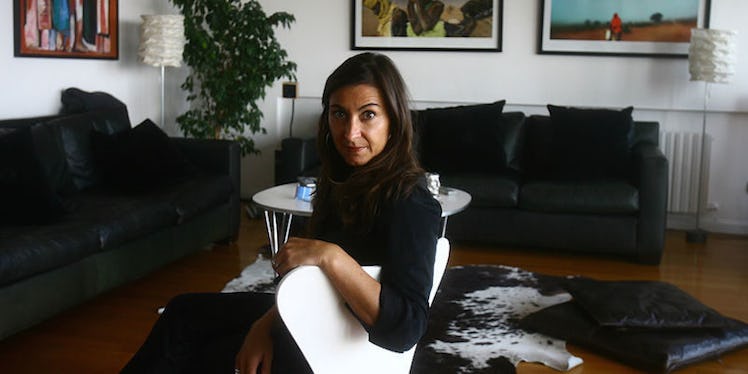
Badass Photographer Calls Out The Media For Not Releasing Images Of Refugees
I started learning about the global refugee crisis because of photojournalist Lynsey Addario.
Two years ago, The New York Times published a photo series by Addario of refugees in Sicily. I had heard about the rush of refugees crossing the Mediterranean on boats but wasn't prompted to actually learn more about it until I saw Addario's stunning, moving photos.
The unfortunate reality is we're all pretty good at not thinking about problems affecting other people. But when faced with images, we are touched and can be spurred into action. This is a principal Addario dedicated her life to.
Addario is a super badass photojournalist who has documented crises and conflicts across the world. In 2011, she was one of four New York Times journalists captured and held captive in Libya. She wrote a memoir, "It's What I Do: A Photographer's Life of Love and War," about her career, which Steven Spielberg is directing a film adaption of. Jennifer Lawrence is set to play Addario.
Addario was at Tina Brown's Women in the World Summit in New York City on Wednesday and spoke on a panel about the refugee crisis, which she has been covering since 2012.
She spoke about the power of images to inspire action and care. Brown, who moderated, asked Addario about the photo of 3-year-old refugee Aylan Kurdi dead on the shore in Turkey after a failed attempt to cross the sea. The photo went viral and sparked international outrage at the lack of care refugees were getting.
Addario reminded Brown when the images of Kurdi were first released, many media organizations chose not to show them because they were too graphic. She said,
For me, that's a complete crime, because how dare you not publish this image that is finally the image to get people talking?
Once it started getting out, it was so powerful, it went viral, forcing people to respond. Addario continued,
That was the image, after thousands and thousands of images that we had all taken -- I had been working on the refugee issue since 2012, and I couldn't get anyone to care about Syrian refugees -- that was the issue that made people start to address policy.
Addario said the reaction to this image shows why the media has to show shocking images, even if they are hard to look at. She explained,
It's my job to try and figure out a way to get under people's skin, to get people talking.
She spoke about a recent story she did with TIME about rape being used as a weapon of war in Africa. The magazine ran a cover image shot by Addario of a naked woman who became pregnant as a result of rape.
Addario thought it was "brave" of TIME to publish that image on the cover. When the magazine came out, she said,
The reaction was incredible, and so many people started talking about rape. Finally, it was on the table -- because the image was shocking. The image was powerful. But it takes that to get people to pay attention.
Although Addario is glad people finally began paying attention to the refugee crisis, thanks to the photos of Kurdi, she's still frustrated. She said,
Did anything happen? No. In the end, we're still in the same situation. Boatloads of refugees keep coming. People keep talking about what to do. Nothing is happening. That's a crime. I mean, these people are dying. What are we doing about it?
Unfortunately, Addario is right. Despite the outrage the world felt seeing the images of Kurdi, Europe is still not helping the refugees. Many nations are outright rejecting refugees and keeping them stuck within Greece's borders. This week, under a new European Union plan, authorities actually began sending refugees in Greece back to Turkey.